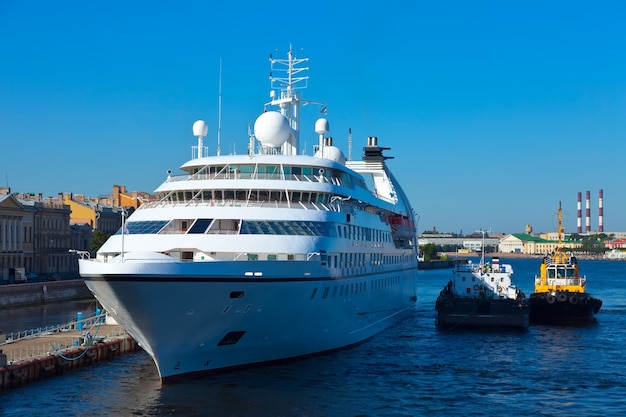Maritime Mobile Communications: Enhancing Connectivity at Sea
Introduction
Maritime mobile communications play a crucial role in ensuring connectivity and communication between ships and shore. With the rapid advancements in technology, the maritime industry has witnessed significant improvements in its communication capabilities. These advancements have not only enhanced safety and operational efficiency but have also facilitated crew welfare and enabled seamless integration with onshore operations. This article explores the importance of maritime mobile communications, the technologies involved, and the benefits they bring to the industry.
The Significance of Maritime Mobile Communications
Maritime mobile communications are vital for the efficient operation and safety of vessels at sea. Reliable and effective communication networks enable ships to stay connected with each other, as well as with onshore authorities, service providers, and emergency responders. The ability to communicate in real-time allows for swift decision-making, collaborative problem-solving, and coordination of various maritime activities.
One of the key benefits of maritime mobile communications is the improvement of safety and security at sea. Ships can transmit distress signals promptly, enabling search and rescue operations to be initiated swiftly. Additionally, real-time weather updates and navigation information can be shared among vessels, minimizing the risks associated with adverse weather conditions and navigational hazards.
The Technologies behind Maritime Mobile Communications
Several technologies form the backbone of maritime mobile communications, enabling seamless connectivity and data transfer. These technologies include:
- Satellite Communications:
- Radio Communications:
- Automatic Identification System (AIS):
- Global Maritime Distress Safety System (GMDSS):
- Inmarsat:
Satellite communications systems, such as VSAT (Very Small Aperture Terminal), provide reliable connectivity regardless of the vessel’s location. Satellites orbiting the Earth ensure uninterrupted communication, enabling voice and data transmission for various applications, including internet access, telephony, and video conferencing.
Radios are essential tools for maritime communication. Vessels rely on Very High Frequency (VHF) radios for short-range communication between ships and with coastal radio stations. High-Frequency (HF) radios, on the other hand, enable long-range communication over greater distances, making them crucial in remote areas where satellite coverage may be limited.
AIS is a system that enables the automatic and continuous exchange of vessel-specific information, including identification, position, course, and speed. This information can be received by other vessels, shore-based stations, and even aircraft, enhancing situational awareness and aiding in collision avoidance.
The GMDSS is an internationally recognized set of communication protocols and equipment designed to ensure rapid and efficient alerting of distress situations at sea. It integrates various communication technologies, including satellite systems, VHF radios, and emergency position-indicating radiobeacons (EPIRBs), facilitating distress alerting, search and rescue coordination, and dissemination of maritime safety information.
Inmarsat is a leading provider of global mobile satellite communications for maritime applications. Their satellite network offers reliable voice and data connectivity, enabling key maritime services such as maritime safety services, broadband internet access, high-quality voice calls, and fleet management solutions.
The Benefits of Maritime Mobile Communications
Maritime mobile communications offer a wide range of benefits to the industry, crew members, and the environment. Some notable advantages include:
“The ability to communicate seamlessly at sea not only enhances operational efficiency but also contributes to the well-being of crew members and the overall safety of maritime operations.”
Operational Efficiency: Efficient communication networks allow for streamlined coordination between vessels, ports, and other stakeholders in the maritime supply chain. Real-time data exchange facilitates efficient vessel routing, cargo tracking, and port operations, leading to reduced transit times, optimized fuel consumption, and increased productivity.
Crew Welfare: Maritime mobile communications enable crew members to stay connected with their families and friends while at sea. Access to means of communication helps alleviate feelings of isolation and loneliness, improving crew morale and mental well-being. It also allows for remote medical consultations, reducing the need for medical evacuations in non-emergency situations.
Environmental Impact: Effective communication systems contribute to environmentally conscious practices in the maritime industry. Accurate weather information and real-time data sharing enable ships to optimize routes, avoiding areas with high pollution levels or sensitive marine ecosystems. This promotes fuel efficiency, reduces greenhouse gas emissions, and minimizes the overall ecological footprint.
The Future of Maritime Mobile Communications
As technology continues to evolve, the future of maritime mobile communications holds promising advancements. With the advent of 5G networks, vessels will benefit from even higher data transfer speeds, lower latency, and enhanced connectivity. This will enable the integration of advanced technologies such as remote-controlled or autonomous vessels, real-time video surveillance for improved security, and augmented reality applications for crew training and maintenance procedures.
Moreover, the Internet of Things (IoT) will play a significant role in maritime communication, with sensors and devices interconnected to gather and exchange data. This will result in increased automation, improved decision-making processes, and enhanced operational efficiency.
In Conclusion
Maritime mobile communications have transformed the way the industry operates, ensuring safety, efficiency, and connectivity at sea. From satellite communications to radio technologies and integrated systems like AIS and GMDSS, these advancements provide seamless connectivity and data transfer for a wide range of applications. The benefits of improved operational efficiency, enhanced crew welfare, and reduced environmental impact make maritime mobile communications integral to the future of the industry. As technology continues to advance, the potential for further innovation is vast, ensuring that connectivity and communication at sea will continue to evolve and improve.



